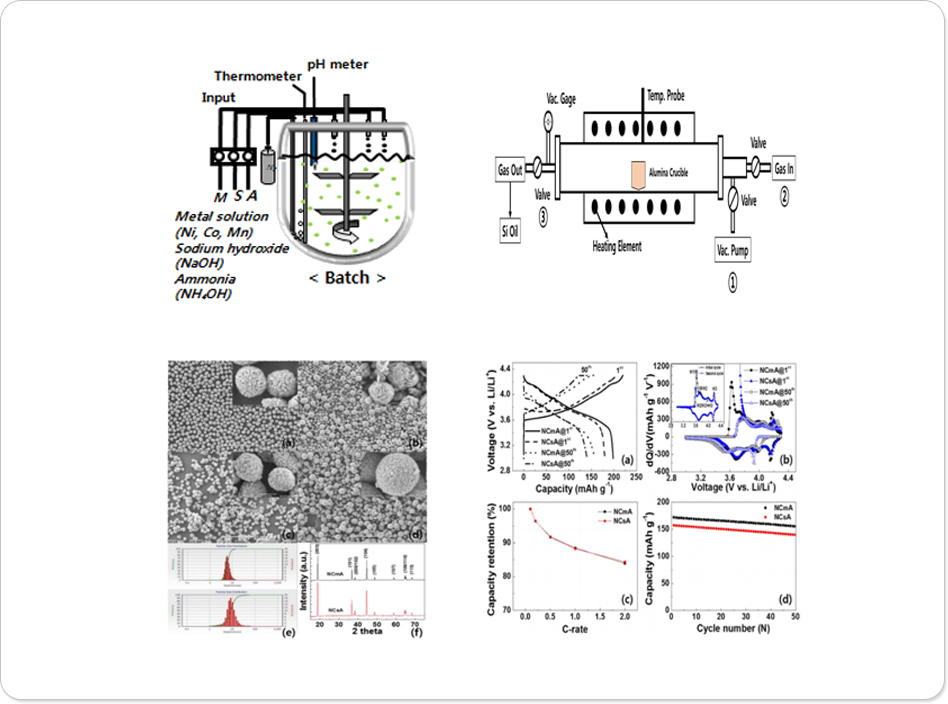
-
INORGANIC MATERIAL

Cathode materials are the main component of Li-ion batteries. they determine the energy density of a cell through cell voltage and / or capacity. Lithium ion batteries are typically based on intercalation / deintercallation compounds, where lithium ions provided by the cathode are inserted into the host lattice (anode) during charge and extracted during discharge, with a minimal structural change in the host material. The choice of cathode material with a particular chemistry depends on various factors, including cell voltage, capacity, energy and power capabilities, cycle life, and temperature of operation.

- The layered structure gives the highest practical capacity (currently up to ∼180 Ah kg−1 ) among the three, but suffers from structural and/or chemical instabilities during cycling depending on the chemical composition and state of charge (lithium content in the electrode).

- The LiMn2O4 spinel cathode with a three-dimensional structure and lithium ion diffusion offers high rate capability and good structural stability without phase transformations.

- The olivine LiFeO4 cathode, on the other hand, offers good thermal stability and safety without oxygen release as the covalently bonded PO4 groups tightly hold the oxygen, but suffers from limited practical capacity.


